Covered California Streamlines the Business of Health Insurance Using DocuSign for Salesforce and the DocuSign eSignature API
Covered California is the state-based marketplace where Californians can sign up for health insurance under the Affordable Care Act (ACA). As such, Covered California has a mission to ensure access and enrollment to ACA-compliant plans for all Californians seeking individual and family insurance when they do not receive those benefits through an employer. Covered California works with 11 insurance companies that provide qualified health plans. To best serve Californians, Covered California engages more than 14,000 certified agents, brokers, and community partners that provide advice and enrollment assistance regarding qualified health plans to California residents. These professionals and agencies are collectively referred to as entities.
The DocuSign digital solution is incredibly flexible. It allows us to include the necessary approvals and workgroups from many departments and to automate workflow. With DocuSign, our processes are much more secure, streamlined, and efficient. - Austin Walls-Barcellos, Project Manager - Information Technology Specialist I
Before they can offer services to the public, each of these entities must have a signed agreement—which is reviewed and renewed on an annual basis—with Covered California. These services are governed by federal and state regulations, so processing and finalizing each agreement—which includes a signed agreement, supporting documentation, and certifications—requires many reviews and approvals by Covered California.
The business process for managing the entity agreements was inefficient, time-consuming, and costly. Covered California also was challenged by a lack of visibility into workflow. Each year, thousands of pages of paper were ushered through various divisions, including sales, finance, and legal—often by being walked from one office to another. Data extracted from the paper documents was manually keyed into spreadsheets, then uploaded into a database for review. The paper, ink, and staff required to process these agreements was significant, and the overall process slow.
Enter digital transformation and the incorporation of DocuSign into Covered California’s business process. Covered California already used DocuSign to obtain electronic signatures from contracted agents at the end of the business process. Covered California sought a fully automated, digital solution that would reduce paper and ink, streamline paperwork, speed time to approval for agreements, provide security and confidentiality of entity information and signatures, and permit visibility of the agreement and process status to relevant parties.
The Road to Optimal Health
Covered California had a use case for automated templates and electronic signatures. The use case indicated significant potential for automating the multi-stage approval process and electronic signatures. Since Covered California uses Salesforce to manage many parts of its business, it turned to Zennify, a leading expert in providing custom Salesforce solutions, especially those that integrate the DocuSign eSignature API.
Zennify focused on creating a positive user experience (UX), while also incorporating existing technologies used by Covered California: DocuSign and Salesforce. Covered California decided to implement the Salesforce Community Cloud, sometimes referred to as Salesforce Communities. Salesforce Communities enables companies to create a customer or partner portal that is custom branded. The Covered California portal in the Salesforce Community Cloud provides these benefits:
- Enables community partners to use a fully automated process to initiate, sign, and complete their agreements to become Covered California-authorized entities.
- Provides digital transformation of existing business processes using DocuSign for Salesforce, the DocuSign eSignature API, and Salesforce Custom Buttons.
- Centralized, mobile-enabled website manages the entire process and provides two-way communication between Covered California and its entities.
While DocuSign for Salesforce provides a prebuilt integration that can be used for many business scenarios, Covered California needed a highly flexible integration with Salesforce Communities. To create this flexibility, Covered California extended DocuSign for Salesforce functionality by implementing a Salesforce custom button that calls the DocuSign eSignature API. This enabled Covered California to bridge the gap between Salesforce Communities and DocuSign. Behind the custom button functionality is a coding language called APEX, which is similar to Java. The entity agreement process involves providing key business information and is completed sequentially, as follows and as shown in Figure 1 (left side):
- Sections 1 – 5 – Entity provides key business information as shown in Figure 1 (left side).
- Section 6 – Entity provides three types of documentation required by Covered California. This documentation can be provided in any order:
- Entity Agreement – This step compiles all the data entered in sections 1 through 5 and generates an agreement document that is sent to the entity for eSignature. (See the How It Works section below for more details on the technical implementation.)
- Proof of Business Status Documentation – Documentation that provides a Tax ID Number on letterhead to prove eligibility to be or remain an entity.
- Proof of Insurance – Documentation that proves the entity carries a minimum of $1,000,000 of liability insurance.
- Section 7 – Qualifying Attestations – Series of five statements certifying eligibility.
The entity is prompted in each of the seven sections to either enter data or upload documents for review by Covered California, so those steps are not covered in this API success story. However, from a DocuSign perspective, the compelling part is when the entity clicks the DocuSign CAEAgreement custom button shown in Figure 1. This custom button was created within the Salesforce Lightning Platform to initiate the eSignature process for the Certified Application Entity (CAE) Agreement. For more information about how the custom button was implemented, see How It Works later in this API success story.
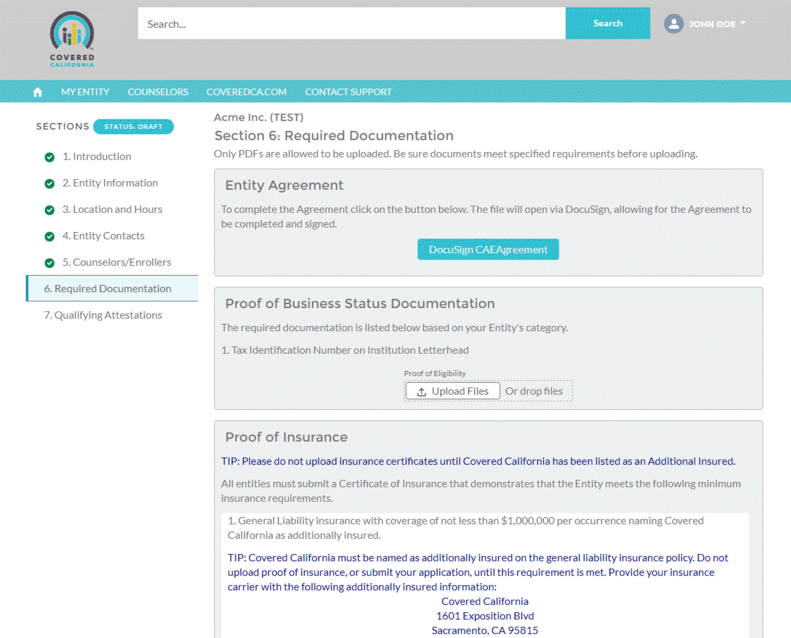
Figure 1. Salesforce Communities page showing completed data entry and custom button to send the agreement for eSignature.
Covered California created these DocuSign templates, each of which is used for a specific purpose:
- Certified Application Entity (CAE) Agreement
- Medi-Cal Managed Care Plan (MMCP) Agreement
The APEX code automatically selects the correct template based on the information the entity has provided in Sections 1 – 5. For example, DocuSign templates are determined by the type of entity (e.g., Certified Application Entity, Certified Enrollment Entity), how an entity provides services (e.g., at a private office, through a community clinic), and whether an entity is compensated by Covered California or by the plan-based provider.
After selecting the correct template (and looking up the corresponding Template ID), Covered California calls the DocuSign eSignature API to specify recipients and substituted Salesforce Communities field values (from Sections 1 – 5) for the preconfigured DocuSign Tab values in the selected template. The result is a recipient receiving the populated agreement document via email, which is shown in Figure 2.
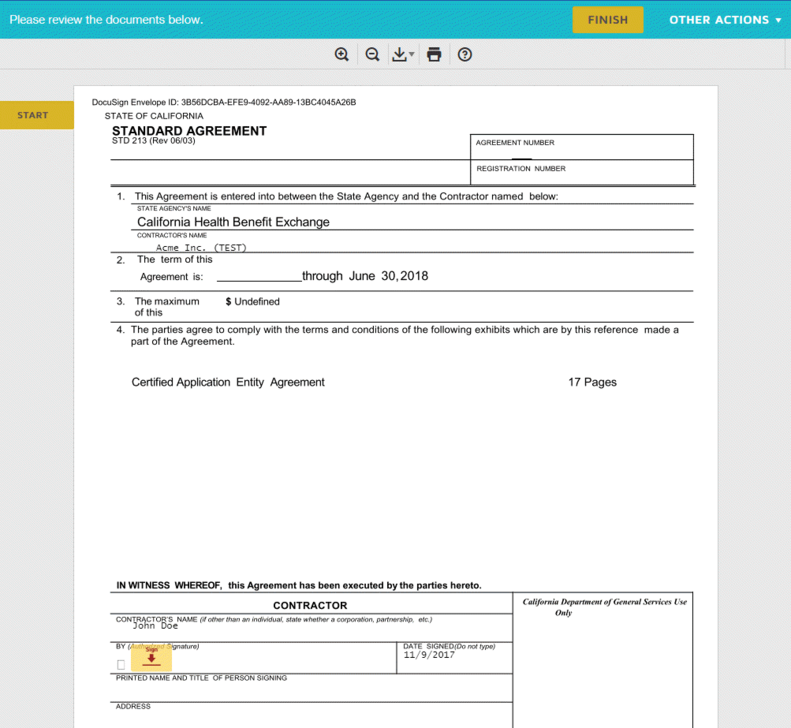
Figure 2. Sample agreement showing data populated from sections 1 – 5, ready for eSignature.
After the DocuSign agreement is signed, the Salesforce Communities page shows a checkmark in the Entity Agreement area of Section 6. The supporting documentation (proof of business status, liability insurance, etc.) can be uploaded at any time by the entity, but all sections must be completed for Covered California to begin reviewing the documents. All signed and uploaded documents are stored in the Salesforce Communities record for the entity (displayed as Account) in the Required Documentation section, as shown in Figure 3.
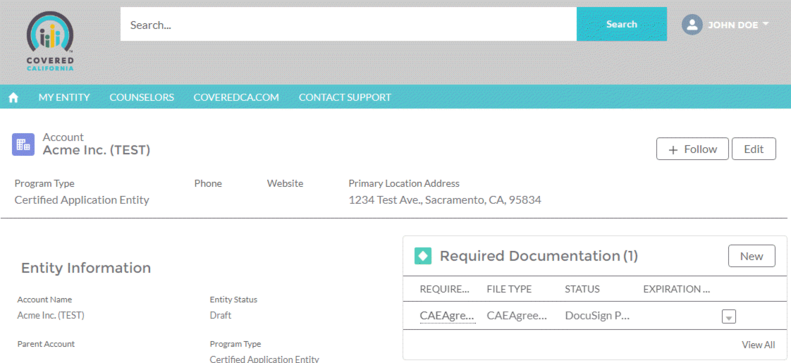
Figure 3. Salesforce Communities showing which required documents have been received.
As shown in Figure 4, when each document is signed or uploaded, it is added to the Salesforce Communities record, the corresponding Salesforce record, and the Notes & Attachments section.
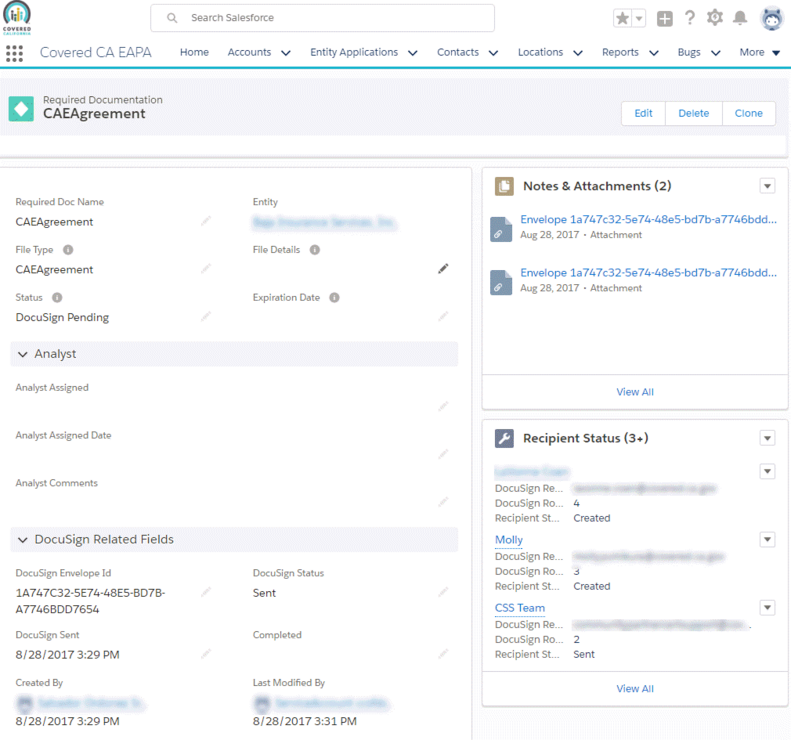
Figure 4. Salesforce record showing received documents and application status.
Figure 4 contains detailed information that helps Covered California understand what the status of a given application is in the overall process. Some key points are that Figure 4 shows the overall DocuSign status as Pending, indicating that the review process is not yet complete. The Notes & Attachments section shows a list of all DocuSign documents that are complete (signed), as well as all uploaded documents. The Recipient Status section shows the status of each recipient’s signature on the envelope. The recipients are listed in reverse signing order with the earliest recipient on the bottom and the most recent recipient on top. Each recipient will have a recipient status of Created until the envelope is routed to a given recipient. When the envelope is routed to a specific recipient, it will have a recipient status of Sent and when the recipient signs the agreement, it will show a recipient status of Complete. When all required recipients have signed the agreement, the overall DocuSign Status field is changed to Complete and the Completed field will reflect the corresponding date.
How It Works
To extend the functionality of DocuSign for Salesforce, an APEX API wrapper was created around the DocuSign eSignature API that is called when the entity clicks the custom button shown in Figure 1. Clicking the custom button initiates the agreement review process between Covered California and its entities.
The APEX code, shown in Figure 5, performs the following functions:
- Selects the correct template based on the criteria entered by the entity filling out the agreement.
- Calls the DocuSign API to create the envelope using the selected template ID. The template is pre-created by Covered California with the correct recipients and routing order, but some values are substituted at run-time based on user input into the various Salesforce Communities sections. The values include entity name, email address, etc. Standard DocuSign functionality handles the routing based on selected routing order.
- Checks DocuSign envelope status by implementing a DocuSign Connect webhook. This enables a custom web listener to receive notifications when any status change is made to an envelope. Therefore, the Salesforce status is updated when any recipient in the routing order signs the agreement, and also when the envelope status is complete (all recipients have signed).
- Checks whether additional required documentation has been uploaded. This is not a DocuSign piece, but is required as part of the overall process. When all required documentation has been uploaded and the agreement has been signed, Salesforce notifies Covered California so they can assign an analyst to review all documents.
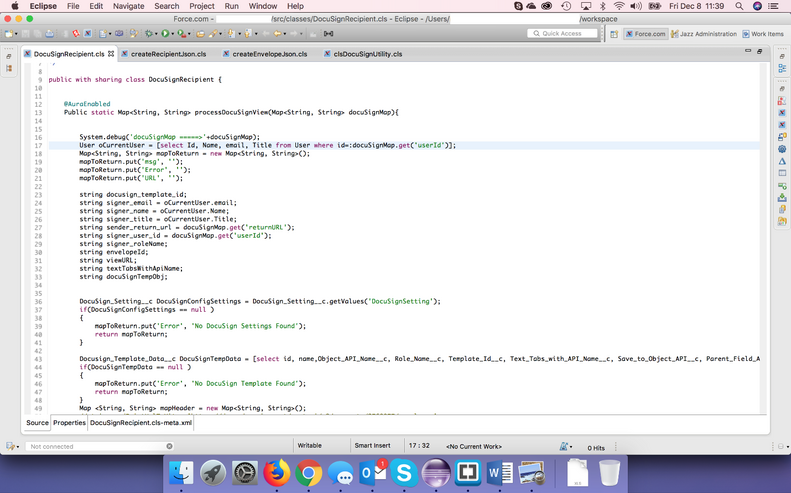
Figure 5. APEX code using Eclipse as the editor.
In only a matter of three weeks, the prototype was created, development was completed and the custom solution was rolled-out, with the DocuSign development piece taking only a little more than one week. They were able to find most of the resources they needed in the DocuSign Developer Center, but also consulted the DocuSign Professional Services team to learn best practices for integrating with Salesforce custom buttons.
An Excellent Prognosis
By using the eSignature API and DocuSign for Salesforce to create a custom solut ion that integrates with Salesforce Communities, Covered California now has an automated process for reviewing and approving agreements from the entities that provide Californians with access to ACA qualified health plans.
Agreements now move seamlessly through the approval process, which is trackable, secure, transparent, and 100 percent automated. If entities need to amend their information, the new solution is nimble enough to handle changes immediately. The time to process agreements has been reduced now that agreements don’t need to be walked from one division to the next and information doesn’t need to be manually keyed into spreadsheets. Covered California benefits from complete visibility into the workflow through the Salesforce dashboard and DocuSign. Now, Covered California can readily track where exactly agreements are in the approval process and which divisions still need to sign agreements. In addition to the highly efficient new process, Covered California is saving money and eliminating wasted resources of paper and ink. This efficiency saves time and money, while benefiting from enhanced services offered by Covered California.
You can try the power and flexibility of the DocuSign eSignature API for yourself with a free developer sandbox—just visit the DocuSign Developer Center, and see for yourself why Covered California chose the DocuSign API.
